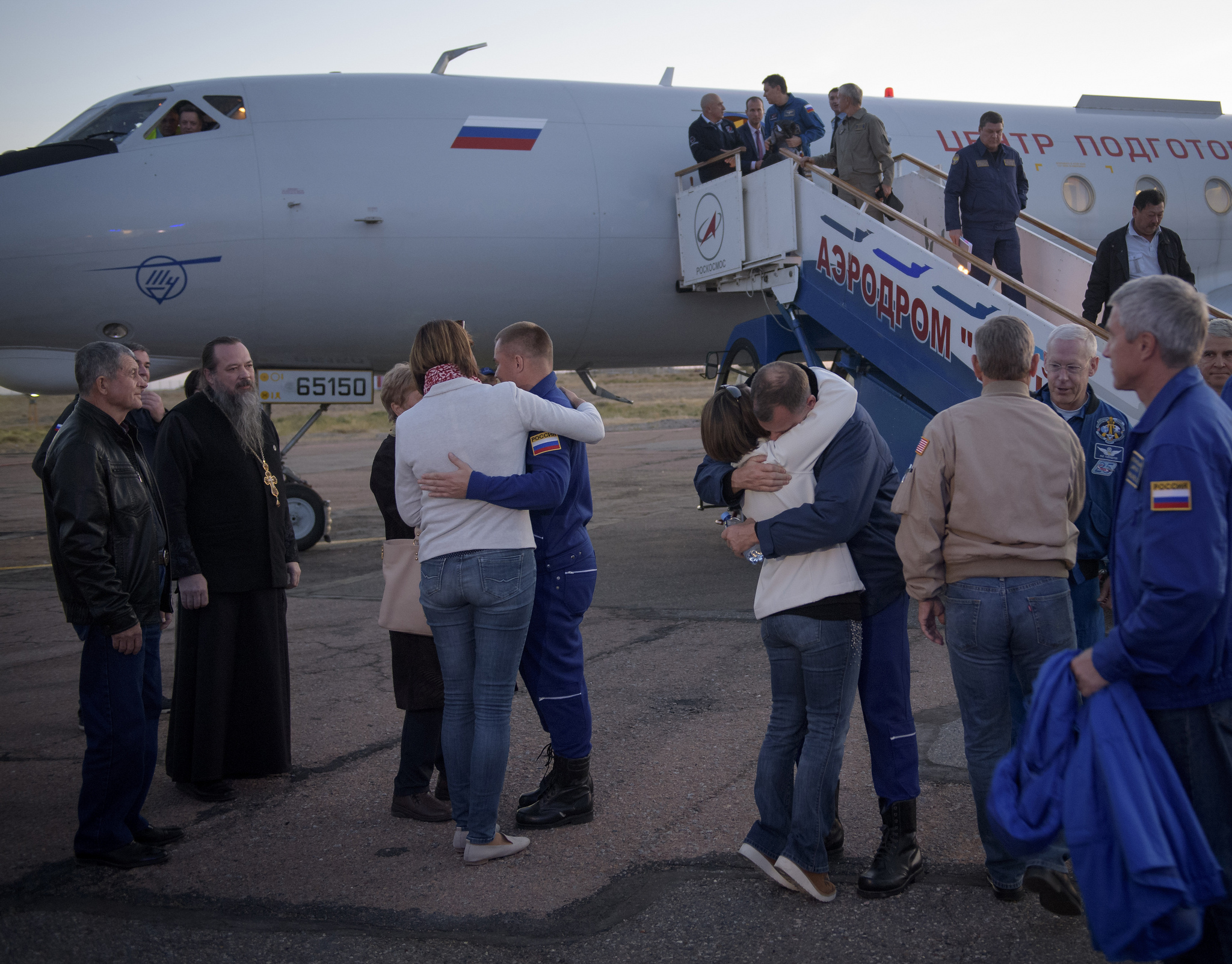Astronaut, Cosmonaut in 'Good Health' After Surviving Soyuz Rocket Launch Failure

After suffering a launch failure on their way to the International Space Station today (Oct. 11), two Expedition 57 crewmembers have returned to Earth and are in "good health," NASA officials said in a news conference.
Riding atop a Russian Soyuz rocket, the Soyuz MS-10 spacecraft lifted off from the Baikonur Cosmodrome in Kazakhstan at 4:40 a.m. EDT (0840 GMT) with NASA astronaut Nick Hague and Russian cosmonaut Alexey Ovchinin on board. Approximately 2 minutes after liftoff, the crew reported that they were experiencing weightlessness earlier than they expected. Roscosmos reported that one of the rocket's four boosters had failed, and this triggered the emergency escape system that sent the crew barreling back to Earth.
Plummeting through the atmosphere in what's known as a "ballistic descent," the spacecraft fell to Earth at a much steeper angle than normal, subjecting the crew to nearly 7 G's of force — equivalent to seven times the force of Earth's gravity, NASA astronaut Reid Wiseman said in the briefing. [In Photos: Space Station Crew's Harrowing Abort Landing After Soyuz Launch Failure]
With usual Soyuz landings, astronauts experience no more than 6 G's. This is comparable to the G-force experienced by NASA's first astronauts in the Mercury and Gemini programs. Apollo astronauts experienced about 4 G's on the Saturn V rocket, while astronauts riding in NASA's space shuttles were subjected to only about 3 G's.
The most intense ballistic re-entry of a Soyuz spacecraft happened in 2008, when three Expedition 16 crewmembers experienced more than 8 G's before landing off-course. NASA astronaut Peggy Whitson was on that Soyuz and reported having difficulty breathing as the extreme G-force crushed her lungs. Her crewmate Yi So-yeon — South Korea's first astronaut — was hospitalized afterward for severe pain in her back and neck.
A ballistic re-entry is kind of "like shooting a bullet out of a rifle barrel," Wiseman said. "It starts slowly spinning the descent module so that it has aerodynamic stability as it comes back through the thicker part of the atmosphere, and then the parachute comes out and they land."
Hague and Ovchinin touched down near the town of Dzhezkazgan, Kazakhstan, 3 to 4 minutes after the anomaly occurred. "Ground rescue forces were on them absolutely immediately, so that was a great thing to see happen," Wiseman said. "From everything that we have seen, the crew is in great shape. They're in Baikonur, and they're healthy ... and they look real good," he added. "We are well-trained for all of these events when we're coming back in, and so the crew handled their procedures exactly as planned."
Get the Space.com Newsletter
Breaking space news, the latest updates on rocket launches, skywatching events and more!
In photos released by NASA and Roscosmos, both Hague and Ovchinin appeared to be in good spirits, smiling as they underwent health checks and munched on a plate of assorted nuts.
According to Russia's Federal Medical Biology Agency, which has been taking care of Hague and Ovchinin since the landing, recovery teams transported the crewmembers back to Baikonur after the landing, and they are expected to return to the cosmonaut training center in Moscow tomorrow (Oct. 12).
Email Hanneke Weitering at hweitering@space.com or follow her @hannekescience. Follow us on Twitter @Spacedotcom and on Facebook. Original article on Space.com.
Join our Space Forums to keep talking space on the latest missions, night sky and more! And if you have a news tip, correction or comment, let us know at: community@space.com.

Hanneke Weitering is a multimedia journalist in the Pacific Northwest reporting on the future of aviation at FutureFlight.aero and Aviation International News and was previously the Editor for Spaceflight and Astronomy news here at Space.com. As an editor with over 10 years of experience in science journalism she has previously written for Scholastic Classroom Magazines, MedPage Today and The Joint Institute for Computational Sciences at Oak Ridge National Laboratory. After studying physics at the University of Tennessee in her hometown of Knoxville, she earned her graduate degree in Science, Health and Environmental Reporting (SHERP) from New York University. Hanneke joined the Space.com team in 2016 as a staff writer and producer, covering topics including spaceflight and astronomy. She currently lives in Seattle, home of the Space Needle, with her cat and two snakes. In her spare time, Hanneke enjoys exploring the Rocky Mountains, basking in nature and looking for dark skies to gaze at the cosmos.









